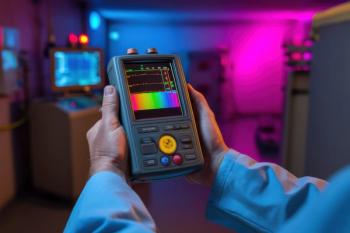
Near-IR Spectroscopy Used to Detect Disease in Cattle
Researchers at the Kansas State University Agricultural Experiment Station and Cooperative Extension Service (Manhattan, Kansas) conducted a pilot study at a commercial feedyard in which they used near-infrared spectroscopy to identify cattle with undifferentiated bovine respiratory disease (BRD), a leading cause of post-weaning bovine illness and death.
Researchers at the Kansas State University Agricultural Experiment Station and Cooperative Extension Service (Manhattan, Kansas) conducted a pilot study at a commercial feedyard in which they used near-infrared spectroscopy to identify cattle with undifferentiated bovine respiratory disease (BRD), a leading cause of post-weaning bovine illness and death.
Pulse oximetry has been used with cattle to detect decreased arterial oxygen levels in animals with respiratory disease, but it has limitations due to varied responses caused by different hide colors and probe placement. Near-infrared spectroscopy is a noninvasive technique that measures the tissue saturation of oxygen and is not limited by the color of the hide or other factors that limit pulse oximetry. In humans, it is used to evaluate compartmental syndrome, exercise tolerance, and peripheral vascular disease.
Wavelengths of 650 nm and 810 nm were used to illuminate the tissue beneath the skin and determine the amount of oxygen attached to hemoglobin in the arterioles, venules, and capillaries. Unabsorbed light is analyzed to produce a ratio of oxygenated hemoglobin to total hemoglobin. These values were comparable to arterial blood gas values obtained in the same animal when the measurement was taken directly over an artery.
More details from the study can be found at http://www.cattlenetwork.com/Content.asp?ContentID=334300.
Newsletter
Get essential updates on the latest spectroscopy technologies, regulatory standards, and best practices—subscribe today to Spectroscopy.





